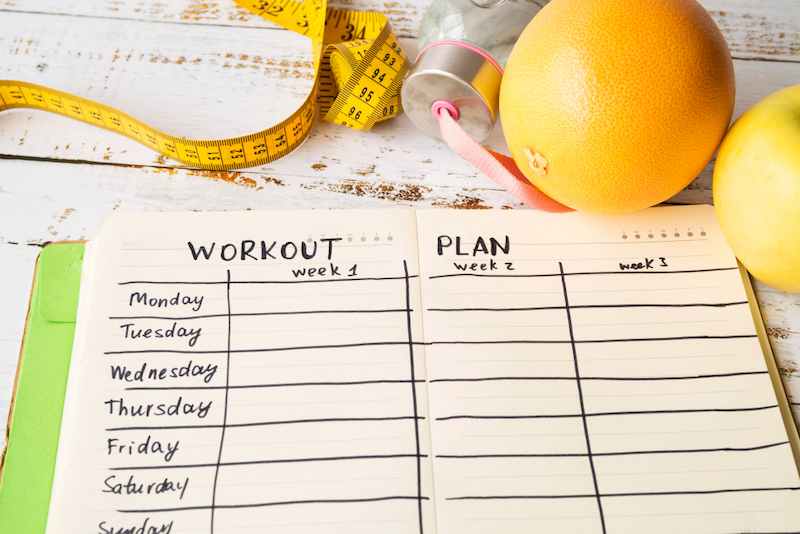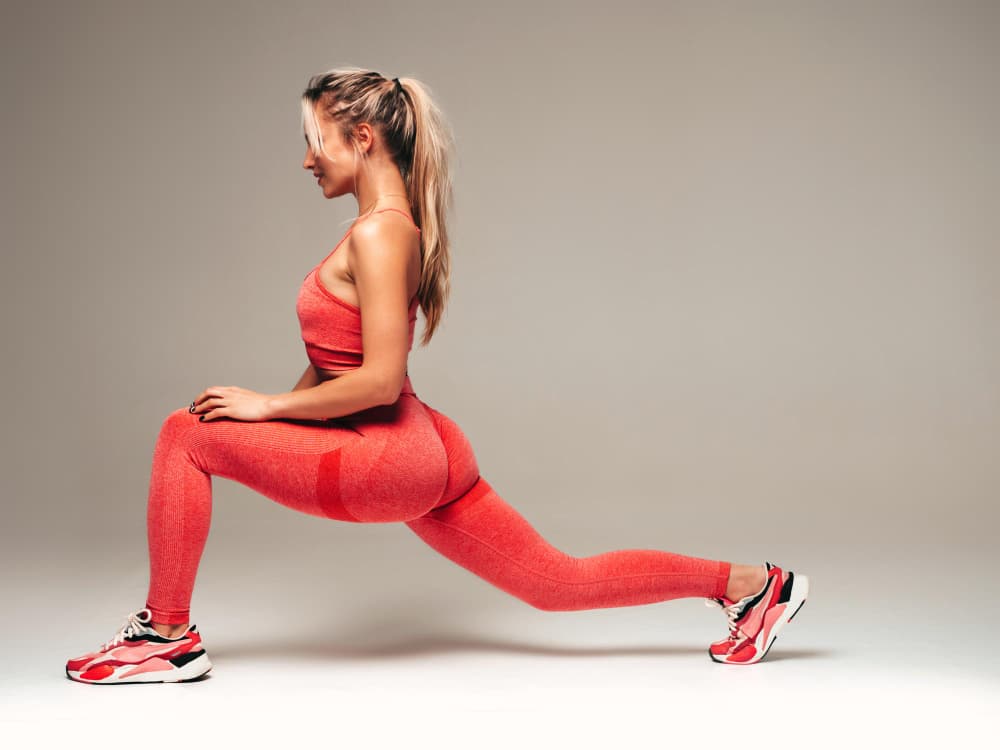It can be intimidating to start a fitness journey, especially if you’re a newbie with 30 Days Workout Challenge for Beginners. But don’t worry! In just 30 days, you can jumpstart your fitness programme and see amazing results with the appropriate direction and a well-thought-out plan. We’ll provide you a thorough exercise challenge that is especially tailored for novices in this blog. Lets start!!
Beginner Workout Challenge: Transform Your Body in Just 30 Days
Prepare to change your physique, increase your energy, and enhance your general wellbeing with our 30 Days Workout Challenge for Beginners program.
I. Understanding the Importance of a 30 days workout challenge
Setting Realistic Goals:
Before diving into any fitness program, it’s essential to set realistic and achievable goals. Aim to improve your overall fitness, lose weight, increase strength, or boost endurance. By setting clear objectives, you can stay motivated and track your progress effectively.
Building Consistency:
Consistency is key when it comes to seeing results. Commit to following the 30-day workout challenge every day, rain or shine. Consistency helps establish healthy habits and allows your body to adapt to the routine.
Tracking Progress:
Documenting your progress throughout the challenge is crucial for staying motivated. Keep a workout journal or use a fitness tracking app to record your workouts, track improvements in strength and endurance, and monitor your overall fitness level.
II. Designing Your 30 Day Workout Plan for your Body Transformation Challenge

Assessing Your Current Fitness Level:
Before starting the challenge, it’s important to assess your current fitness level. This will help you customize the workout plan according to your abilities and avoid overexertion to design your body transformation challenge. Consider factors such as cardiovascular endurance, strength, and flexibility.
Choosing the Right Exercises:
As a beginner, focus on compound exercises that engage multiple muscle groups. These include squats, lunges, push-ups, and planks. Incorporate a variety of exercises to target different areas of your body and prevent boredom by following workout plan like 30 day full body workout challenge, best 30 day fitness challenge, abs in 30 days, 30 day body transformation, 30 day ab challenge women,
30 day body transformation female challenge and many more.
Incorporating Cardiovascular Activities:
Cardiovascular exercises are vital for improving heart health and burning calories. Include activities such as brisk walking, jogging, cycling, or swimming in your workout plan. Start with manageable durations and gradually increase the intensity as you progress.
Incorporating Strength Training:
Strength training helps build muscle, increase bone density, and boost metabolism. Incorporate exercises using free weights, resistance bands, medicine ball, or bodyweight movements. Begin with lighter weights and focus on maintaining proper form before gradually increasing the resistance.
Allowing for Rest and Recovery:
Rest and recovery are just as important as the workout itself. Schedule rest days in your plan to allow your body to repair and rebuild. Aim for at least one or two rest days per week to prevent overtraining and reduce the risk of injuries.
III. Weekly Breakdown of the 30 Days Workout Challenge for Beginners
Week 1:
Establishing a Foundation During the first week, the focus is on building a foundation and getting accustomed to the workouts. Aim for three to four workout days with a day of rest in between each session. Start with 20-30 minutes of cardiovascular exercise, such as brisk walking or cycling, followed by a full-body strength training routine. Incorporate exercises like squats, lunges, push-ups, and planks. Remember to stretch before and after each workout to prevent muscle soreness.
Here’s a 30-day workout plan specifically designed for 30 Days Workout Challenge for Beginners:
Week 1 :
Day 1:

- 10 minutes of brisk walking
- 2 sets of 8 bodyweight squats
- 2 sets of 8 knee push-ups
- 2 sets of 8 lunges (4 per leg)
- 1 set of 15-second plank hold
Day 2: Rest
Day 3:
- 10 minutes of brisk walking
- 2 sets of 8 bodyweight squats
- 2 sets of 8 knee push-ups
- 2 sets of 8 lunges (4 per leg)
- 1 set of 15-second plank hold

Day 4: Rest
Day 5:

- 10 minutes of brisk walking
- 2 sets of 8 bodyweight squats
- 2 sets of 8 knee push-ups
- 2 sets of 8 lunges (4 per leg)
- 1 set of 15-second plank hold
Day 6: Rest
Day 7: Rest
Week 2:
Increasing Intensity In the second week, it’s time to step up the intensity. Increase the duration of your cardiovascular workouts to 30-40 minutes and challenge yourself by adding intervals or incline variations. Continue with the full-body strength training routine but consider increasing the weight or resistance for some exercises. Don’t forget to listen to your body and take breaks when needed.
Week 2:
Day 8:
- 15 minutes of brisk walking
- 2 sets of 10 bodyweight squats
- 2 sets of 10 knee push-ups
- 2 sets of 10 lunges (5 per leg)
- 1 set of 20-second plank hold
Day 9: Rest
Day 10:
- 15 minutes of brisk walking
- 2 sets of 10 bodyweight squats
- 2 sets of 10 knee push-ups
- 2 sets of 10 lunges (5 per leg)
- 1 set of 20-second plank hold
Day 11: Rest
Day 12:
- 15 minutes of brisk walking
- 2 sets of 10 bodyweight squats
- 2 sets of 10 knee push-ups
- 2 sets of 10 lunges (5 per leg)
- 1 set of 20-second plank hold
Day 13: Rest
Day 14: Rest
Week 3 :
Challenging Yourself By week three, you should start noticing improvements in your fitness level. Push yourself further by incorporating high-intensity interval training (HIIT) into your cardio sessions. Alternate between periods of intense effort and active recovery. Focus on increasing the weight or resistance in your strength training exercises to continue challenging your muscles.
Week 3:
Day 15:
- 20 minutes of brisk walking
- 2 sets of 12 bodyweight squats
- 2 sets of 12 knee push-ups
- 2 sets of 12 lunges (6 per leg)
- 1 set of 25-second plank hold
Day 16: Rest
Day 17:
- 20 minutes of brisk walking
- 2 sets of 12 bodyweight squats
- 2 sets of 12 knee push-ups
- 2 sets of 12 lunges (6 per leg)
- 1 set of 25-second plank hold
Day 18: Rest
Day 19:
- 20 minutes of brisk walking
- 2 sets of 12 bodyweight squats
- 2 sets of 12 knee push-ups
- 2 sets of 12 lunges (6 per leg)
- 1 set of 25-second plank hold
Day 20: Rest
Day 21: Rest
Week 4:
Pushing Your Limits In the final week, give it your all and push your limits. Increase the duration of your cardio workouts to 40-50 minutes, and consider trying new forms of cardio like running or swimming. Challenge your strength by adding more sets or reps to your exercises or trying advanced variations. Remember to maintain proper form and listen to your body to prevent injuries.
Week 4:
Day 22:
- 25 minutes of brisk walking
- 2 sets of 12 bodyweight squats
- 2 sets of 12 knee push-ups
- 2 sets of 12 lunges (6 per leg)
- 1 set of 30-second plank hold
Day 23: Rest
Day24:
- 25 minutes of brisk walking
- 2 sets of 12 bodyweight squats
- 2 sets of 12 knee push-ups
- 2 sets of 12 lunges (6 per leg)
- 1 set of 30-second plank hold
Day 25: Rest
Day 26:
- 25 minutes of brisk walking
- 2 sets of 12 bodyweight squats
- 2 sets of 12 knee push-ups
- 2 sets of 12 lunges (6 per leg)
- 1 set of 30-second plank hold
Day 27: Rest
Day 28: Rest
Day 29:
- 30 minutes of brisk walking
- 2 sets of 12 bodyweight squats
- 2 sets of 12 knee push-ups
- 2 sets of 12 lunges (6 per leg)
- 1 set of 35-second plank hold
Day 30: Rest
Remember to listen to your body, start with proper form, and gradually increase the intensity and repetitions as you feel comfortable. It’s crucial to prioritize safety and avoid pushing yourself too hard in the beginning stages of your fitness journey.
IV. Frequently Asked Questions (FAQs)
Can I modify the workout challenge based on my fitness level?
Absolutely! The workout challenge provided is a general guideline for beginners. Feel free to modify the exercises, duration, or intensity based on your fitness level and capabilities. Always prioritize safety and listen to your body.
How long should each workout session last?
Each workout session should ideally last between 45 minutes to an hour, including warm-up, cardio, strength training, and cool-down/stretching. However, adjust the duration based on your schedule and fitness level. It’s better to have a shorter but consistent workout than to skip it altogether.
What if I miss a day during the challenge?
Life happens, and it’s normal to miss a day occasionally. If you miss a workout day, don’t stress or try to make up for it by overexerting yourself. Simply resume the challenge the next day and continue with the scheduled routine.
Should I follow a specific diet during the challenge?
While exercise is a crucial component of any fitness journey, a balanced diet is equally important. Focus on consuming whole, nutritious foods such as lean proteins, fruits, vegetables, whole grains, and healthy fats. Stay hydrated and listen to your body’s hunger and fullness cues.
How do I prevent injuries during the challenge?
To prevent injuries, start with a proper warm-up, including dynamic stretches and mobility exercises. Use correct form during exercises and gradually increase the intensity or resistance. Don’t forget to cool down and stretch after each workout. If you experience pain or discomfort, consult a healthcare professional.
Final Words:
Congratulations on taking the first step towards a healthier, fitter lifestyle! The 30-day workout challenge for beginners is designed to help you build strength, increase endurance, and boost your confidence. Remember, consistency and dedication are key to achieving your fitness goals. Stay motivated, track your progress, and most importantly, enjoy the journey. Get ready to transform your body and embark on a lifelong commitment to your well-being. Good luck!



